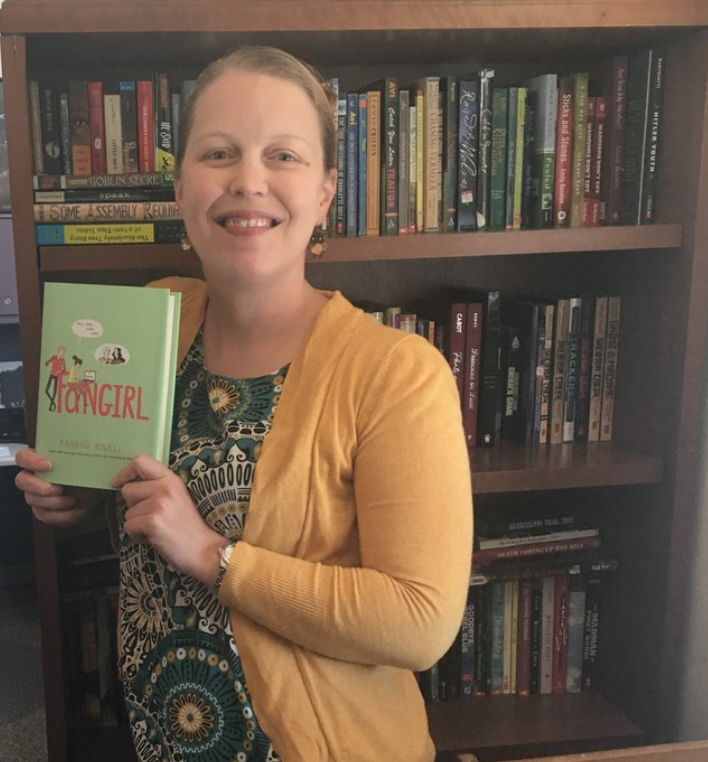The timeless classic, To Kill A Mockingbird by Harper Lee, meets students in nearly every high school as part of their first experience with literature in a classroom setting. English teachers are familiar with lessons working through the delightful yet harrowing coming of age story of a young girl named Scout. Scout shares details of her life as she navigates the painful prejudices buried deep within her southern hometown of Maycomb, Alabama. Throughout the novel students meet several characters that impact Scout’s life.
One character that opens up a tremendous opportunity for my students to interact and connect with the text is Miss Maudie and her Lane cake. After reading the novel, students revisited passages where Miss Maudie and her Lane cake appear. Here is just one of several examples:
“There was a big cake and two little ones on Miss Maudie’s kitchen table. There should have been three little ones. It was not like Miss Maudie to forget Dill, and we must have shown it. But we understood when she cut from the big cake and gave the slice to Jem. As we ate, we sensed that this was Miss Maudie’s way of saying that as far as she was concerned, nothing had changed. She sat quietly in a kitchen chair watching us.”
This Lane cake and Miss Maudie emerge at pivotal points throughout the novel. The cake appears to bring comfort, to show thanks, to celebrate, and to provide togetherness. Scout is able to observe this simple service and see that the cake symbolizes Miss Maudie’s ability to rise above the judgements that run deep in the community, that she is a linchpin for this community, and that she is, for Scout, a safe place to experience moving and growing through her childhood.
Pose the following questions to students for discussion:
- What role does the cake play in this passage? What about other passages where the cake appears?
- This cake keeps popping up, what sorts of meaning can we make about the recurrence of Ms. Maudie’s cake.
- What words or phrases in the text show how Scout is relating to her experience with Ms. Maudie and the cake?
Every culture at any time in history has food as a center and a focus. For students, it is easy for them to see that food connects us. I prompt students to find a recipe for some food that they love or that is special to them, and to gather the story behind it. I encourage them to reach out to an aunt, a grandma, an uncle, a neighbor, etc. This assignment gives students the opportunity to practice presentation creation, storytelling, concept development, and content creation.
The project culminates with a class cookbook that we call The Lane Cookbook.
Student examples from The Lane Cookbook:

Student examples:
Clementine
I’ve grabbed a clementine.
Juicy and Delicious
All to myself with no one interfering,
Until I tossed a piece upon the ceiling.
It went everywhere, including someone's hair.
I decided to throw another one because -- why not?
My target is locked and I started
Winding my arm back until I was ready to fire.
Whoosh! It traversed the room and landed on a window.
Juices flying and people crying because I have made a mess.
It was fun.
I'm not upset.
Carrot Cake
Tiny cake slash! in half.
C r U m B l e S the inside, carrots coming off.
Slap! the icing to the middle.
S p r e a d it around.
Bre ∫ ak! the cake and glue it.
S i g h. I give up and put the top half on.
Smush more icing on top and sides.
“Poor lonely cake
By itself with no cinnamon inside.”
But I am happy! to have that tasty cake.
While we are reading To Kill A Mockingbird, students read a fiction piece of their choosing. They keep track of places where food plays a role in the story. There are examples in timeless classics and in their own favorite fiction pieces.
- The Hate You Give by Angie Thomas: The main character, Starr, eats peanut butter on graham crackers at her Uncle Carlos’ house. This is just one example in the text where specific foods play an important role in Starr’s connection with her world.
- Between Shades of Gray by Ruta Sepetys: The main character, Lina, deals with starvation in a work camp in Lithuania. Sepetys writes descriptively about Lina’s fight for food and how it shows both division and connection between characters.
- Daughter of the Mountain by Louise Rankin takes little Momo on a journey through the mountains of Tibet to find her missing dog. Along her journey, she is fed by strangers that introduce the reader to unique Tibetan foods.
- The Lion The Witch And The Wardrobe by C.S. Lewis, Edmond falls under the White Witch’s spell after she lures him into her world with Turkish Delights.
Elisha
Rampersad, Arnold (ed.). The Collected Poems of Langston Hughes. New York: Vintage Classics, 1995.




 RSS Feed
RSS Feed